When it comes to capturing the rich tones and dynamic range of female vocals, selecting the right microphone is crucial. The ideal mic not only complements the unique timbre of a singer’s voice but also ensures clarity and warmth in the recording. From the airy highs to the profound lows, a top-notch microphone can make all the difference in preserving the emotion and power of the performance. In this listicle, we’re spotlighting the best microphones tailored to accentuate the beauty of female vocals, whether you’re recording in a studio or setting up a home rig. Get ready to find the perfect match for your sonic canvas.
When selecting the best microphone for recording female vocals, it’s crucial to consider several key criteria to ensure that the nuances and clarity of the voice are captured perfectly. Here is an introduction to the criteria used for our listicle review:
- Frequency Response: A microphone’s ability to pick up various frequencies affects how it captures the unique characteristics of a female voice, which typically has a higher pitch. Look for a wide and flat frequency response for a natural sound.
- Pickup Pattern: Different mics have different pickup patterns, such as cardioid, omnidirectional, or bidirectional. Cardioid mics are ideal for studio recording because they focus on sound coming from the front and minimize background noise.
- Sensitivity: The sensitivity of the microphone is crucial for picking up the subtleties and dynamics of vocal performances. A sensitive microphone will capture more detail but may also require a quieter recording environment.
- Build Quality: A sturdy, well-constructed microphone will not only last longer but can also reduce the handling noise, which is important for maintaining recording clarity.
- Additional Features: Features like integrated pop filters, shock mounts, and the ability to handle high sound pressure levels without distortion can be significant factors in your choice.
These criteria have guided our selection of microphones, focusing on those that provide exceptional vocal clarity, detail, and overall sound quality suitable for female vocals.
Here’s a simplified table comparing the microphones. Keep in mind that the specs I list will be limited to the most relevant for recording female vocals, and prices can vary widely depending on the retailer and any current promotions. For the most accurate price, you’ll want to check a reliable retailer or the manufacturer’s website.
| Microphone | Price Range (USD)* | Type | Polar Pattern | Frequency Response | Sensitivity | Signal-to-Noise Ratio | Additional Features |
|---|---|---|---|---|---|---|---|
| Neumann TLM 103 | $1,100-$1,300 | Condenser | Cardioid | 20 Hz to 20 kHz | 23 mV/Pa | 87 dB (A) | Low self-noise, transformerless circuitry, high sound pressure handling capabilities |
| AKG C214 | $350-$500 | Condenser | Cardioid | 20 Hz to 20 kHz | 20 mV/Pa | 81 dB (A) | Integrated suspension, low cut filter, high dynamic range |
| Shure SM7B | $350-$400 | Dynamic | Cardioid | 50 Hz to 20 kHz | -59 dBV/Pa | NA | Flat, wide-range frequency response, internal “air suspension†shock isolation, effective pop filter |
| Rode NT1-A | $180-$230 | Condenser | Cardioid | 20 Hz to 20 kHz | 25 mV/Pa | 88 dB (A) | Ultra low noise, includes shock mount and pop shield |
| Audio-Technica AT4040 | $300-$500 | Condenser | Cardioid | 20 Hz to 20 kHz | 17.8 mV/Pa | 82 dB (A) | Technically-advanced large diaphragm, high SPL capacity |
When choosing a microphone, consider what’s important for your recording situation: the acoustics of your recording space, the specific sound or timbre of the female voice you’re recording, and of course, your budget.
Neumann TLM 103
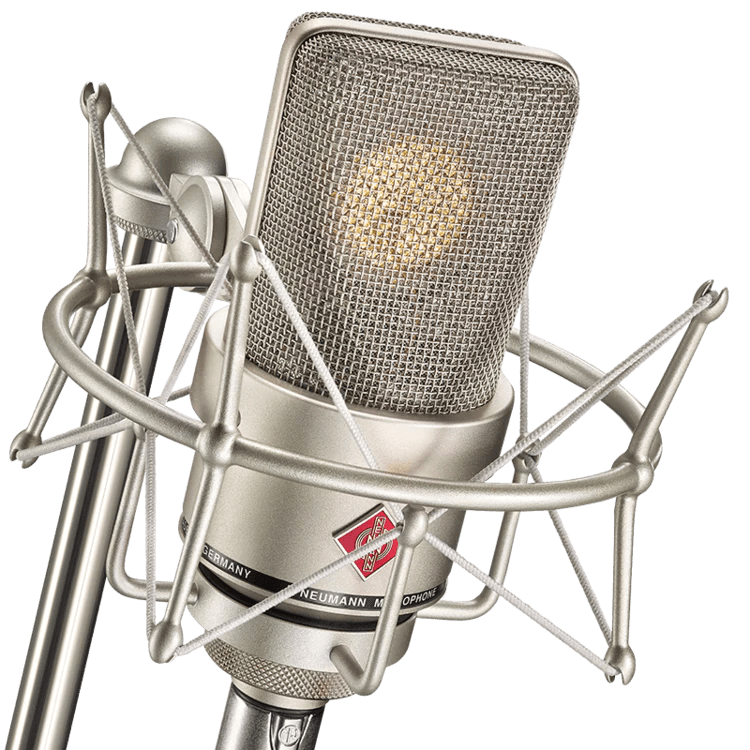
The Neumann TLM 103 is a marvel when it comes to capturing the subtle nuances of female vocals. It shines by delivering a sound that’s both warm and detailed, something that’s vital for recording artists looking to portray every ounce of emotion in their performance. The TLM 103, with its large-diaphragm and cardioid pattern, focuses on the vocalist, ensuring that background noise doesn’t detract from the clarity. In my experience, it achieves a balance that few microphones can boast—offering a polished, professional sound that’s usually associated with far more expensive studio gear.
Specs
- Polar Pattern: Cardioid
- Diaphragm Size: Large
- Frequency Response: 20Hz – 20kHz
- Equivalent Noise Level: 7 dB-A
- Max SPL: 138 dB
- Connector Type: XLR
Pros:
- Exceptional clarity and presence, bringing forward every detail in the vocal performance.
- The build quality is superb, ensuring this is a mic that will last through years of usage.
- It has a very low self-noise, which is crucial for vocal recording where every breath and subtle tone matters.
- Consistent cardioid pattern provides isolation of the sound source and reduces the pickup of side noises.
Cons:
- It’s relatively pricey, and this might be a barrier for those on a tight budget.
- Lacks some of the additional features and adaptability found in other options, like pads and filters.
- It requires a quality pre-amp to truly shine, which could add to the overall investment.
Price
When it comes to high-end microphones, the Neumann TLM 103 is certainly an investment, generally landing in the market at a price point upward of $1,000. Affordable? Not exactly for the home studio enthusiast, but for the recording professional or serious artist, it’s priced at a point that reflects its quality and brand reputation without reaching the dizzying heights of some of Neumann’s flagship models. While it does command a premium, the TLM 103 offers a recording experience that could very well be the difference between a good take and a great one.
AKG C214 Professional Large-Diaphragm Condenser Microphone
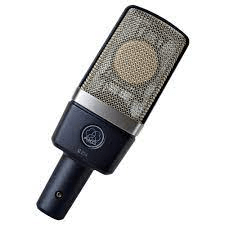
The AKG C214 is a gem among microphones, especially when it comes to recording the intricate tones of female vocals. Its design is inspired by the famous C414, which has been a studio staple for decades. From my experience, the C214 does more than just mimic its elder sibling’s qualities; it excels in its own unique ways.
The first thing that catches the ear is the C214’s ability to capture the full dynamic range of a performance. It doesn’t shy away from the subtle nuances, which is crucial for female vocals that often have a wide variety and depth of emotional expression. The clarity is impeccable, and the microphone adds a pleasing warmth that can make any voice shine, without introducing unwanted noise or coloration.
Another standout feature is its cardioid pickup pattern. It’s incredibly forgiving for artists who might move a bit during a passionate performance, while still rejecting off-axis sounds that could mar a perfect take. In the studio, the C214 behaves like a trusted friend, reliable and ready to serve the artist’s vision without imposing its own character too much.
Specs:
- Polar Pattern: Cardioid
- Frequency Range: 20 Hz to 20 kHz
- Sensitivity: 20 mV/Pa
- Equivalent Noise Level: 13 dB-A (IEC 60268-4)
- Dynamic Range: 143 dB
Pros:
- Offers exceptional clarity, capturing the subtleties of female vocals beautifully.
- Delivers a warm and natural sound that flatters but doesn’t overwhelm the source.
- The build quality is robust, reassuring for long-term use.
- Simple to use, a no-fuss microphone that’s ideal for both beginners and professionals.
Cons:
- Lacks multiple pickup patterns, unlike its C414 sibling, which could be a limitation for some recording situations.
- For those looking for a very specific coloration or vintage character, this mic’s neutral clarity might not align with those preferences.
Price:
The AKG C214 sits comfortably in the mid-tier price range. You’re not breaking the bank as you might with some high-end mics, but you’re investing enough to feel confident in the quality and longevity of your purchase. Typically, you can find the AKG C214 priced around $350 to $400, which positions it as a very appealing option for serious musicians and home studio owners who seek professional-grade sound without an exorbitant price tag.
In my opinion, the AKG C214 represents a sweet spot for those looking to elevate their recordings of female vocals. It’s a microphone that doesn’t demand you to be an audio engineer to get the best out of it. It blends seamlessly into the background, allowing the spotlight to shine fully on the performer – and in the world of music, isn’t that exactly what a good microphone should do?
Shure SM7B
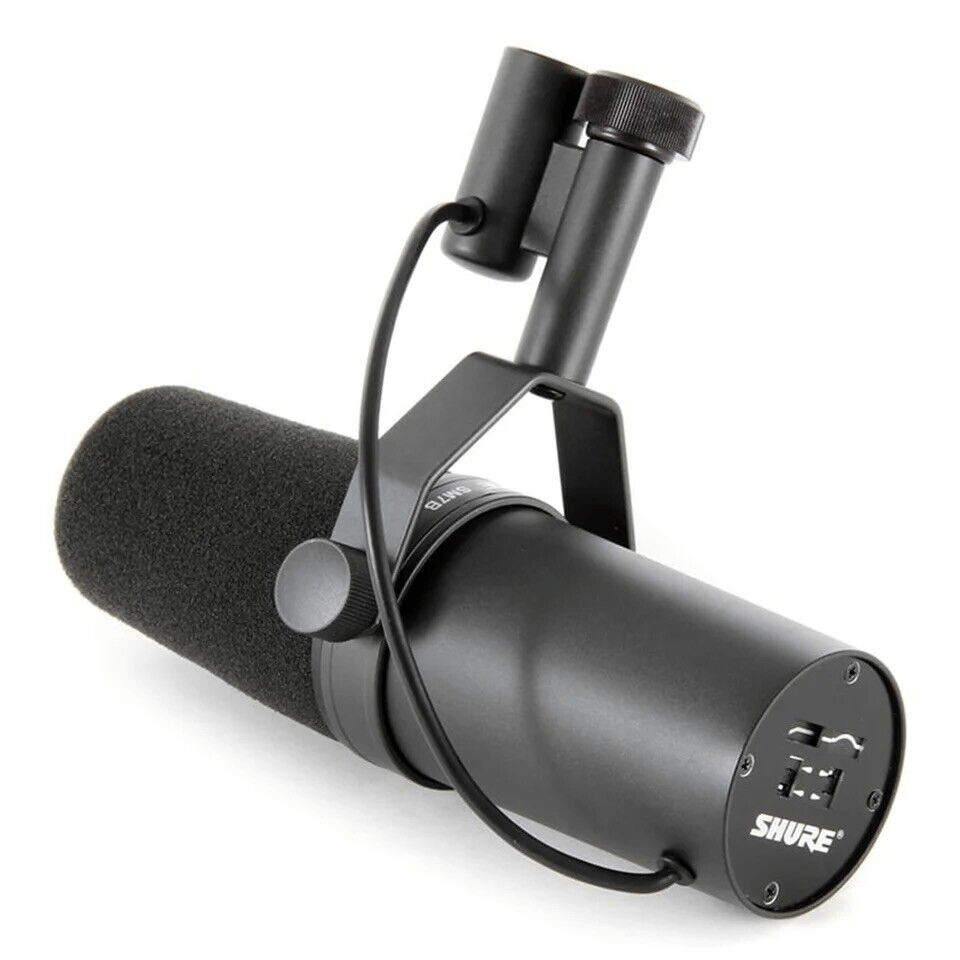
The Shure SM7B is an iconic dynamic microphone that has earned its stripes in both broadcast booths and recording studios around the world. While not traditionally pegged as a ‘female vocal’ mic, it’s smooth frequency response and natural warmth make it an exceptional choice for female vocals that require depth and presence without the added sibilance that some condenser microphones might accentuate.
The beauty of the SM7B lies in its versatility and robust build, ensuring it can capture the nuances of spoken word as adeptly as it can the subtleties of a singing performance. For those who might be worried about the harshness that can sometimes occur in recording female vocals, the SM7B’s tailored roll-off can be a godsend, delivering rich, radio-worthy quality sound that flatters the midrange while still preserving the delicate high-end details.
Specs
- Type: Dynamic
- Polar Pattern: Cardioid
- Frequency Response: 50Hz to 20kHz
- Output Impedance: 150 ohms
- Sensitivity: -59 dB
- Connectors: XLR
Pros:
- Exceptional at capturing vocal nuances without harshness, making it ideal even for the softest female voices.
- The cardioid pattern effectively isolates the main sound source, minimizing background noise.
- Comes with a built-in pop filter and has an optional presence boost, aiding clarity and articulation.
- Renowned for its durability and can handle the accidental knocks of studio life.
Cons:
- Its lower sensitivity requires a decent preamp to get the best out of it – something to bear in mind for a home studio setup.
- Unlike condenser mics, may not capture the airiness and detail in the higher frequencies.
- Bulkier and less adaptable in terms of placement compared to smaller diaphragm condensers.
Price
The Shure SM7B sits comfortably in the mid-range price bracket, exceptional value for a microphone that can potentially serve as your studio workhorse. It typically retails around $399, a justifiable investment for its performance and reliability.
Personal Opinion
In my experience, the Shure SM7B is a microphone that never fails to impress. It’s incredibly forgiving for those just starting to dive into the recording world, as it requires less acoustic treatment of the recording space to get a clean sound. It’s not the typical ‘airy’ condenser that one might gravitate towards for female vocals, but therein lies its charm – it brings a certain richness and fullness that adds character to a performance. For any female artists looking to stand out with a vocal tone that cuts through a mix with warmth and clarity, the Shure SM7B is an unconventional but wise choice. Its rugged build and consistent output make it a reliable piece of studio equipment that could last a good number of years, ensuring great value for money in the long run.
Rode NT1-A
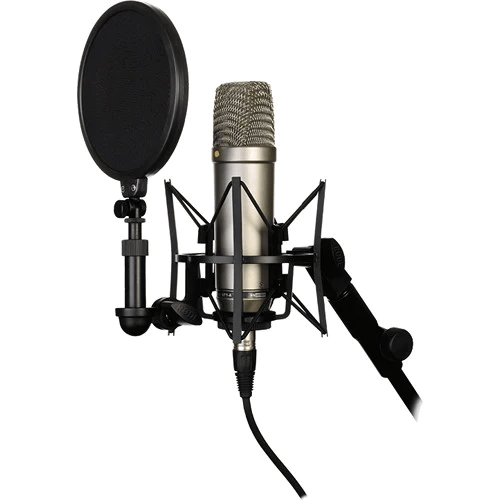
Overview:
The Rode NT1-A positions itself as a staple in the home studio for recording artists, especially those focusing on vocals. It shines when capturing the crystal-clear essence of female vocals, thanks to its characteristic sound profile. This microphone has a bright end that accentuates the clarity and airiness of high-frequencies, which can make female vocals sparkle.
Specs:
With a large 1-inch capsule with a gold-plated diaphragm and a cardioid polar pattern, the NT1-A promises detailed sound capture. It boasts a wide dynamic range, making it suitable for a variety of vocal dynamics—from subtle whispers to powerful belts.
Pros:
- The Rode NT1-A encapsulates what many look for in a studio microphone: clarity, versatility, and affordability.
- Its low self-noise of just 5dBA makes it stand out in its class. This is particularly advantageous when recording quieter, more intimate vocal sessions where every breath and subtle vocal nuance matters.
- It often comes as an all-in-one bundle, reducing the need to purchase additional accessories.
Cons:
- Though its brightness is often an attribute, for voices that already possess a natural treble-heavy sound or for sibilant singers, it can be a double-edged sword, potentially highlighting unwanted frequencies.
- Its reliance on 48V phantom power is typical for condenser microphones, yet it’s a consideration for those who may lack the proper setup.
Price:
For those looking to step into the world of professional-sounding recordings without the intimidating investment, the Rode NT1-A hits a sweet spot. It affords the average consumer the ability to record with professional fidelity at a fraction of the cost of high-end microphones.
My take on the Rode NT1-A is that it represents an incredible value for emerging artists and seasoned professionals alike who seek top-tier recordings at home. The NT1-A’s sensitivity and sonic fidelity allow female vocals to cut through a mix with grace and definition. The sweetened high-end, while a consideration for some, is often a desirable trait for those looking to bring a radiant quality to their recordings.
Audio-Technica AT4040
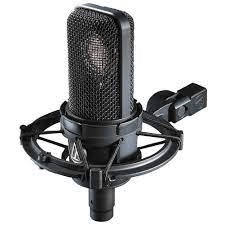
Brief Intro:
The Audio-Technica AT4040 is a condenser microphone that is designed for professionalism and versatility. It stands out in the market for its technically advanced large diaphragm and impressive sound pressure level handling. When it comes to female vocals, the microphone’s smooth, natural sonic characteristics ensure that the subtleties and power of a female voice are captured with great detail and warmth.
Overview:
In my experience, the AT4040 is a standout choice for those who are seeking clarity and responsiveness in vocal recordings. It’s particularly adept at handling the dynamic range of female singers, capable of catching the faintest whisper to the most powerful belt with equal precision. The microphone’s cardioid polar pattern is effective in isolating the vocals from unwanted background noise, which is invaluable in studio settings. Additionally, the AT4040 offers a transformerless circuitry that virtually eliminates low-frequency distortion and provides superior correlation of high-speed transients. The result is a pure, natural sound with none of the ‘coloration’ that can alter the original performance.
Specs:
- Element: Externally-polarized (DC bias) condenser
- Polar Pattern: Cardioid
- Frequency Response: 20-20,000 Hz
- Open Circuit Sensitivity: -32 dB (25.1 mV) re 1V at 1 Pa
- Impedance: 100 ohms
- Maximum Input Sound Level: 145 dB SPL, 1 kHz at 1% T.H.D.
- Dynamic Range (typical): 133 dB, 1 kHz at Max SPL
- Signal-to-Noise Ratio: 82 dB, 1 kHz at 1 Pa
- Phantom Power Requirements: 48V DC, 4.2 mA typical
Pros
- Exceptional sound pressure level handling for versatile use
- Consistent cardioid polar pattern that isolates main sound source
- Transparent sound with no coloration delivers true vocal performance
Cons
- Requires phantom power, which might be inconvenient for some mobile or on-the-go setups
- Might be sensitive to plosive sounds without a proper pop filter
Price:
The Audio-Technica AT4040 is generally priced around the mid-range for condenser microphones, often found at approximately $299 USD. Considering its high-end performance and reliable quality, it provides significant value for its price point.
In my opinion, the AT4040’s strength lies in its ability to deliver a polished and professional vocal sound that competes with more expensive microphones. That, coupled with its robust build quality, makes it an excellent investment for anyone looking to capture female vocals in great detail without breaking the bank.
Conclusion:
In summary, choosing the ideal microphone for recording female vocals can profoundly enhance the clarity, warmth, and nuances in the recorded performance. Whether you seek the rich, vintage sound of a high-end tube microphone, the versatility of a large-diaphragm condenser, or the budget-friendly reliability of a dynamic option, there’s a mic to fit every need and price point. Remember to consider key factors such as polar patterns, frequency response, and additional features that complement the unique tonal qualities of female vocals. With the right microphone, each recording session has the potential to capture stellar vocal performances that resonate with emotion and detail.
FAQs:
Q1: Does the type of microphone really make a difference for female vocals?
A1: Absolutely. Different microphones have unique attributes that can either enhance or detract from the natural qualities of female vocals. Choosing a microphone with the right frequency response and sensitivity can highlight the nuances and emotional depth in the performance.
Q2: What is a polar pattern, and how does it affect vocal recording?
A2: A polar pattern determines how much sound the microphone picks up from different directions. For example, a cardioid pattern is great for isolating vocals in a studio environment, as it primarily captures sound from the front and minimizes background noise.
Q3: Should I consider a USB microphone for recording professional vocals?
A3: While USB microphones offer convenience and ease of use, especially for home studios and personal projects, they may not always provide the same audio quality as XLR microphones. XLR microphones, combined with a good audio interface, generally offer superior sound quality and are preferred for professional recordings.
ZOOKE provides you with safe and reliable connector products, with 5.0 spacing products providing more possibilities for limited space and creating more value for the research and development and production of terminal products.
5.00 wire to board connectors,5.0 connectors,ZOOKE connectors
Zooke Connectors Co., Ltd. , https://www.zookeconnector.com